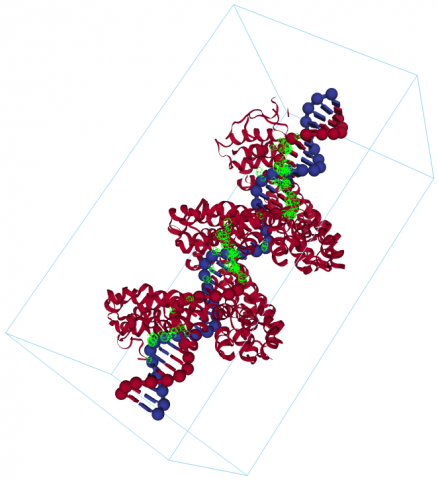Speaker: Lucas Melo
The topic of Molecular Modelling has recently gone through an increasing growth in interest and development. with a more widespread usage of in-silico protein/DNA design tools. One area in Biotechnology is particularly lagging behind when it comes to the modelling of protein/DNA nanostructures: advanced interaction techniques. After observing and querying experienced biotechnologists working in the field of DNA/protein nanotechnology, we came to the conclusion that a lack of usability is one crucial reason holding these tools back from becoming more widely used.
Traditional Computer-Aided Design (CAD) software for engineering and architecture may have a natural point of reference (such as the floor, a room, or the surface of other objects) that allows for straightforward modelling. Modelling and movement in Computer-Aided Molecular Design (MolCAD) software, on the other hand, has no up-vector, and thus no immediately obvious point of reference. Atomic structures are only loosely related to each other, at most forming higher-level structures together (nucleotides, amino acids, nucleic acid strands, proteins, etc.). Translating traditional CAD interaction techniques MolCAD is particularly challenging for web environments, as widely established computation tools are becoming obsolete, lacking support for state-of-the-art General-Purpose GPU computations.
Observing this potential for improvement and its challenges, this Master's thesis aims to explore, design, and implement novel ways to realise 3D MolCAD. More specifically, it aims to answer the following research questions:
- Which CAD interaction techniques exist that are also applicable for MolCAD but are currently not in use yet?
- Which user interface methods increase user satisfaction and efficiency for constraint-based MolCad?
- Will such tools outperform established MolCAD software or even Virtual Reality MolCAD (where 3D interaction becomes inherent due to the immersive spatial experience) in terms of computational speed and user experience?
- With the above goals in mind, is it possible to detect (and possibly solve) collisions between molecular structures in real-time in a web-based environment?
In summary, the expected contribution of this master's thesis is two-fold: (i) to achieve a deeper understanding of useful interaction techniques facilitating MolCAD (design contribution); and (ii) a prototypical implementation, demonstrating that a real-time web-based MolCAD implementation is technically feasible (technical contribution). Together, these contributions should provide a blueprint for future MolCAD tools.
